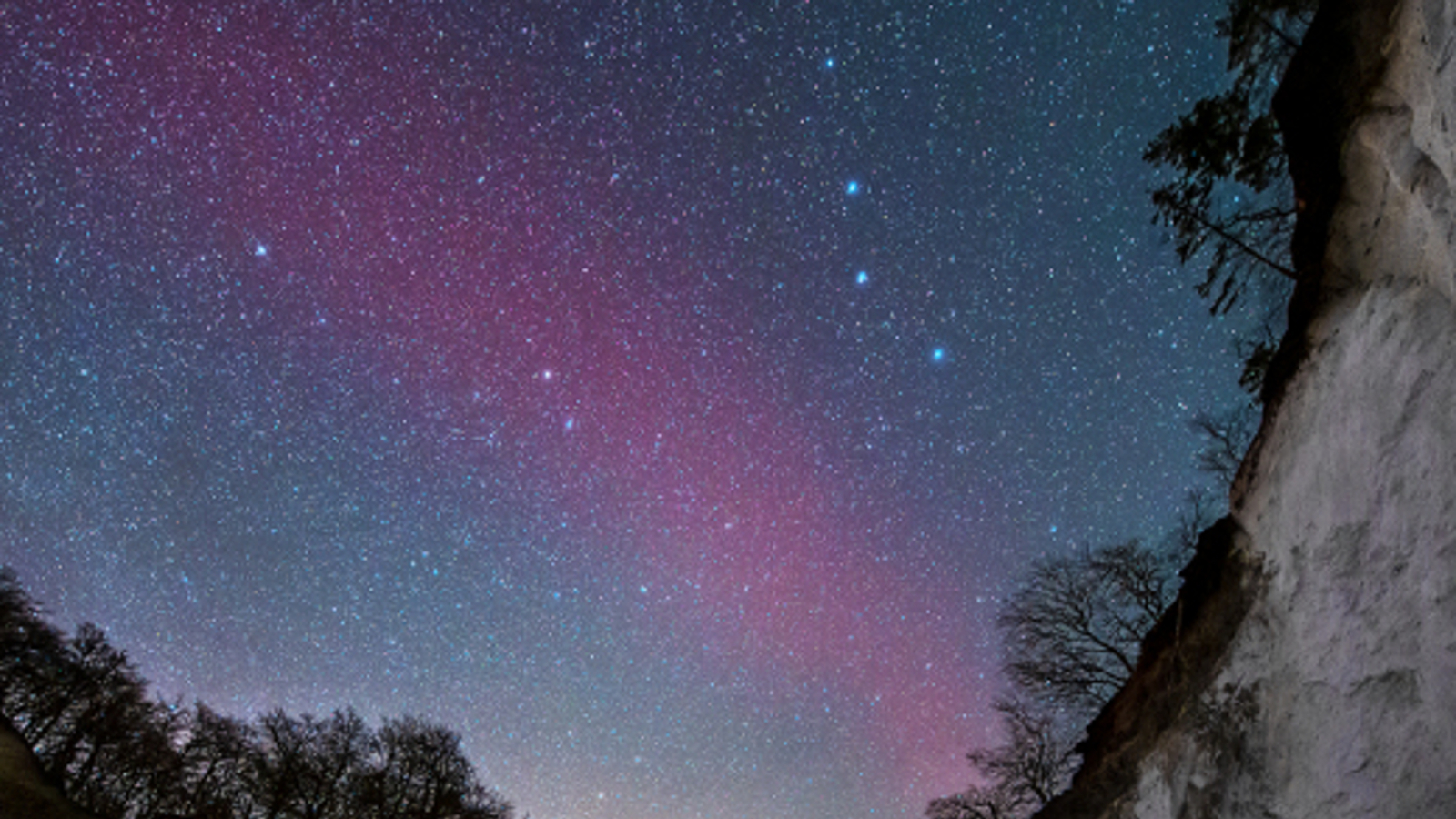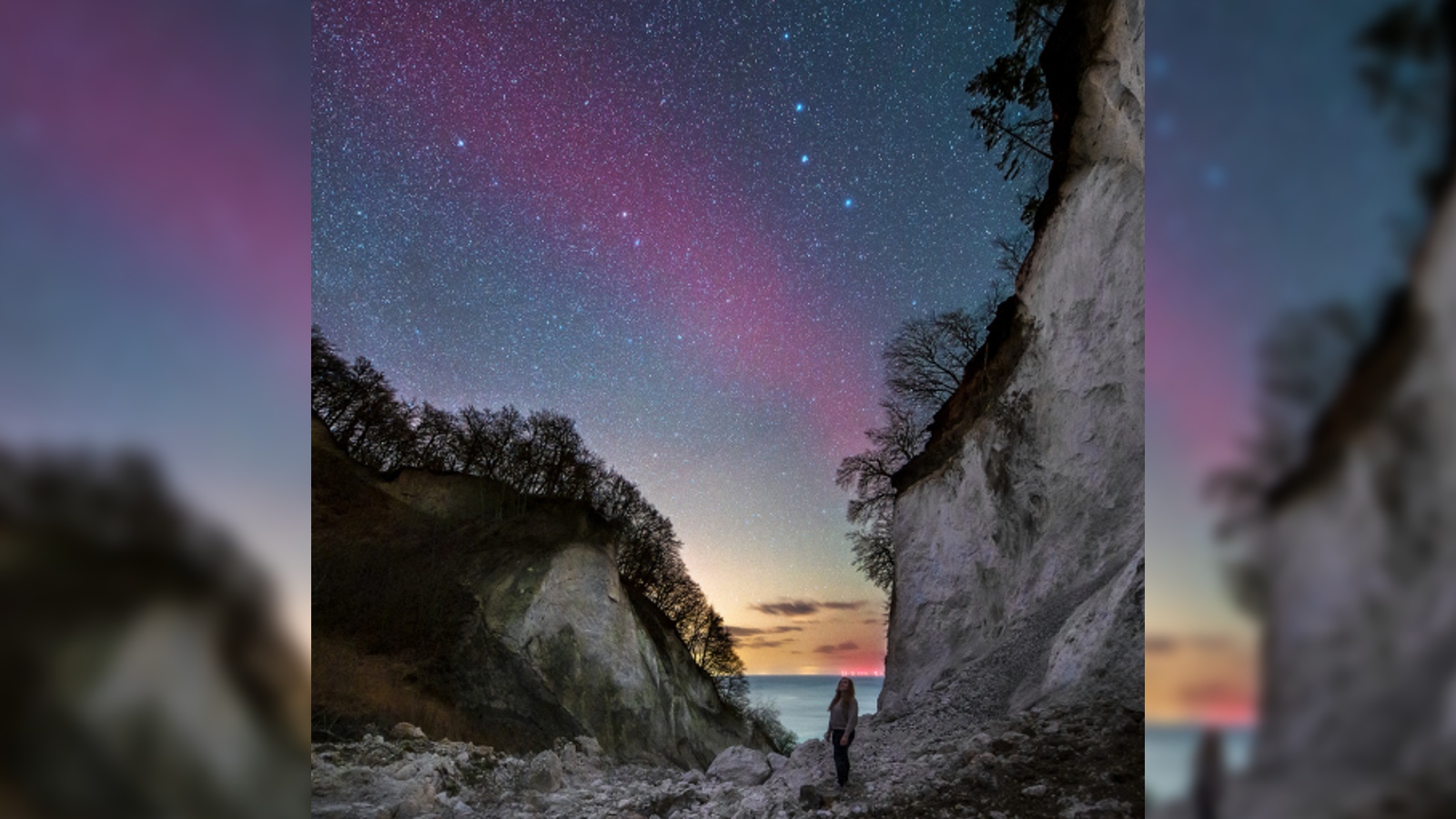Rare blood-red arc of light shines in the Scandinavian sky. What is it?
A river of hazy red light stretched across the night sky over Denmark after the most powerful solar storm to hit Earth for six years slammed into our planet. The rare phenomenon is not an aurora.

A bright red streak of light appeared in the sky above parts of Scandinavia last week after a surprise solar storm smashed into Earth and triggered stunning auroras across the planet. But the bright red band was not an aurora — it was something much rarer.
The streak, which appeared as a river of hazy red light that stretched all the way across the night sky, was most prominently visible above Denmark. Astrophotographer Ruslan Merzlyakov snapped a spectacular shot of the peculiar light show on March 23 above Møns Klint, a set of limestone cliffs on the Danish island of Møn in the Baltic Sea.
The unusual phenomenon is known as a stable auroral red arc (SAR), but despite the name, it is not an aurora or particularly stable, according to Spaceweather.com. Instead, the light is emitted by oxygen molecules in the upper atmosphere that have become superheated by Earth's ring current system, a massive loop of electric current that surrounds our planet.
The SAR coincided with the most powerful geomagnetic storm to hit Earth for six years, which was triggered by a surprise coronal mass ejection — a gargantuan, fast-moving blob of plasma and magnetic field released from the sun — that was spat out of a massive hole in the sun wider than 20 Earths.
Related: Eerily perfect galaxy-shaped spiral appears over Hawaii. What is it?

During auroras, highly energetic particles from solar storms and solar wind bypass Earth's magnetic field, or magnetosphere, and excite molecules of gas in the upper atmosphere. This creates swirling, multicolor lights that ebb and flow over time. The various colors of light come from different atoms, which emit specific colors when excited.
During SARs, energy from the ring current system, which surrounds the magnetosphere, heats up the gas in the upper atmosphere and makes it glow like an aurora. For unknown reasons, only oxygen is heated up during a SAR, which means these phenomena always emit the exact same shade of red, according to Spaceweather.com.
Sign up for the Live Science daily newsletter now
Get the world’s most fascinating discoveries delivered straight to your inbox.
SARs actually occur quite frequently, but they are normally invisible to humans because they are too faint and our eyes are poorly attuned to the wavelength of red light emitted by SARs, according to Spaceweather.com. Massive streaks like the one over Denmark only become visible when strong solar storms weaken the magnetosphere, which enables more heat from the ring current system to enter the upper atmosphere.
The SAR over Denmark was not the only unusual light show observed during the recent solar storm. The aurora-like phenomenon STEVE, a large ribbon of colored light that hangs in the sky for up to an hour, was also visible across the United States and parts of the United Kingdom.
There is some evidence that STEVE and SAR arcs are related phenomena. In March 2015, skywatchers in New Zealand watched as a bright red SAR slowly transformed into a STEVE event over the course of about half an hour.

Harry is a U.K.-based senior staff writer at Live Science. He studied marine biology at the University of Exeter before training to become a journalist. He covers a wide range of topics including space exploration, planetary science, space weather, climate change, animal behavior and paleontology. His recent work on the solar maximum won "best space submission" at the 2024 Aerospace Media Awards and was shortlisted in the "top scoop" category at the NCTJ Awards for Excellence in 2023. He also writes Live Science's weekly Earth from space series.









